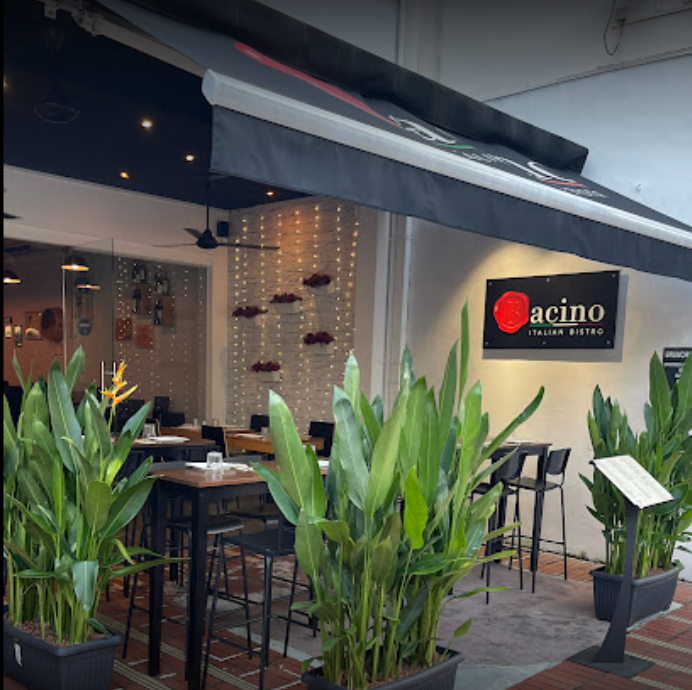Team building activities are essential for fostering a cohesive, productive, and motivated workforce. In the unique setting of an Italian restaurant like Bacino Italian Bistro, team building can be particularly effective and enjoyable. By incorporating cooking activities, sharing the rich history of Italian dishes, and creating a shared culinary experience, teams can bond over their shared efforts and successes. This article explores how to organize a successful team-building event at Bacino Italian Bistro, ensuring it is both fun and impactful.
The Benefits of a Culinary Team Building Event
Before diving into the specifics, it’s important to understand why a culinary team building event can be so beneficial:
- Enhances Collaboration: Cooking together requires teamwork, communication, and cooperation.
- Boosts Morale: The hands-on, interactive nature of cooking can be a fun and refreshing break from the typical workday.
- Encourages Creativity: Experimenting with recipes and ingredients can stimulate creative thinking.
- Fosters Appreciation for Culinary Arts: Learning about the history and techniques behind Italian cuisine can foster a deeper appreciation for the craft and culture.
Planning the Event at Bacino Italian Bistro
Organizing a team-building event at Bacino Italian Bistro involves several key steps to ensure it is engaging and runs smoothly.
1. Define Objectives
Before planning the details, clearly define the objectives of the team-building event. These could include:
- Enhancing teamwork and communication skills
- Building stronger interpersonal relationships
- Learning new skills in a fun environment
- Appreciating the cultural and historical aspects of Italian cuisine
2. Choose the Format
Decide on the format of the event. Some options include:
- Cooking Classes: Teams learn to prepare Italian dishes under the guidance of Bacino’s chefs.
- Cooking Competitions: Teams compete to create the best dish, judged on creativity, presentation, and taste.
- Culinary Workshops: Focus on specific techniques such as pasta making or pizza tossing.
- Cultural and Historical Sessions: Incorporate storytelling sessions where chefs share the history and cultural significance of various Italian dishes.
3. Plan the Menu
Select a menu that offers a range of dishes to suit different skill levels and preferences. A typical menu could include:
- Appetizers: Bruschetta, Caprese salad
- Main Courses: Handmade pasta (such as ravioli or fettuccine), wood-fired pizza
- Desserts: Tiramisu, panna cotta
Ensure that the menu includes options for participants with dietary restrictions, such as gluten-free pasta or vegetarian dishes.
4. Organize the Venue
Coordinate with Bacino Italian Bistro to arrange the venue setup. Ensure there are enough cooking stations, ingredients, and equipment for all participants. The venue should be arranged to facilitate interaction and teamwork.
5. Schedule the Event
Create a detailed schedule for the event. A typical team-building event might look like this:
- Welcome and Introduction: A brief introduction by the Bacino team, outlining the day’s activities and objectives.
- Cooking Session: Teams are guided through the preparation of their dishes, with chefs providing instruction and support.
- History and Culture Talk: A break during which chefs share the history and cultural significance of the dishes being prepared.
- Tasting and Judging: Teams present their dishes, and a judging panel (or the whole group) tastes and scores them.
- Wrap-Up and Reflection: A closing session where participants can reflect on what they learned and enjoyed.
Interactive Activities
To ensure the event is engaging, incorporate a variety of interactive activities:
Cooking Demonstrations
Have Bacino’s chefs demonstrate key techniques, such as kneading pasta dough, preparing a classic sauce, or perfecting a pizza crust. These demonstrations can serve as both instruction and inspiration for the teams.
Hands-On Cooking
Participants should be actively involved in preparing the dishes. Assign different tasks to team members, encouraging them to collaborate and communicate. This hands-on experience is the heart of the team-building event.
Tasting Sessions
After cooking, organize a tasting session where teams sample each other’s creations. This not only allows participants to enjoy a variety of dishes but also promotes a sense of accomplishment and shared enjoyment.
Cultural Storytelling
Incorporate storytelling sessions where Bacino’s chefs share the origins, history, and cultural significance of the dishes being prepared. This adds depth to the cooking experience and fosters a greater appreciation for Italian cuisine.
Tips for a Successful Event
To ensure the event is successful, consider the following tips:
- Engage Professional Chefs: Utilize the expertise of Bacino’s chefs to guide and support the teams. Their knowledge and passion for Italian cuisine will enhance the experience.
- Encourage Participation: Make sure all participants are actively involved in the activities. Assign roles and tasks to ensure everyone contributes.
- Focus on Fun: While learning and teamwork are important, the primary goal should be to have fun. Keep the atmosphere light-hearted and enjoyable.
- Celebrate Successes: Recognize and celebrate the achievements of the teams, whether through awards, certificates, or simply a group toast.
- Provide Feedback: At the end of the event, gather feedback from participants to understand what they enjoyed and what could be improved for future events.
Conclusion
Organizing a team-building event at an Italian restaurant like Bacino Italian Bistro offers a unique and enjoyable way to strengthen teamwork, enhance communication, and foster a deeper appreciation for Italian cuisine. By carefully planning the event, engaging professional chefs, and incorporating interactive and educational activities, you can create a memorable experience that benefits both the participants and the organization. Embrace the rich flavors, traditions, and collaborative spirit of Italian cooking to build a stronger, more connected team.














































































